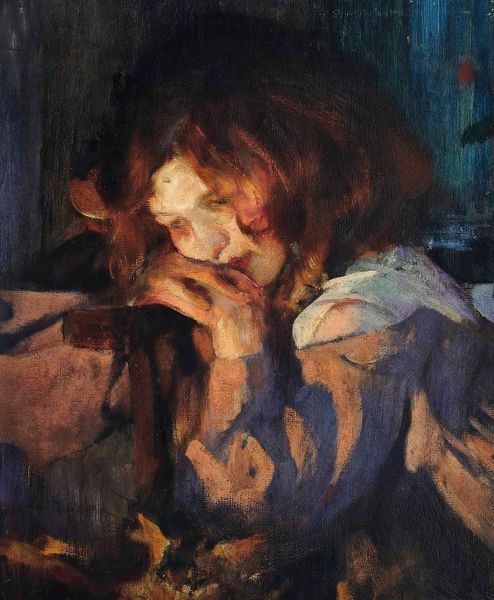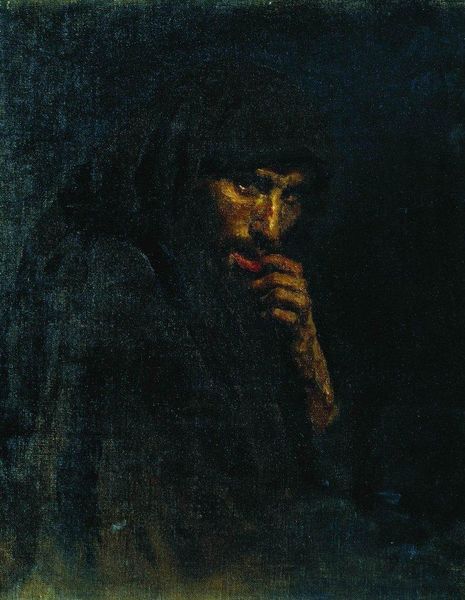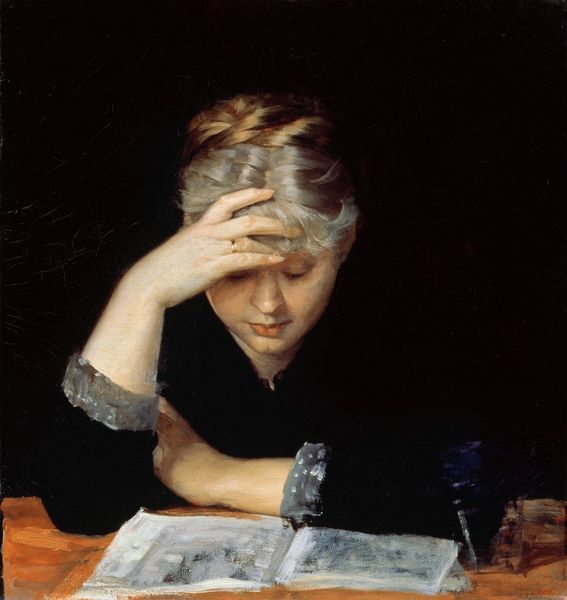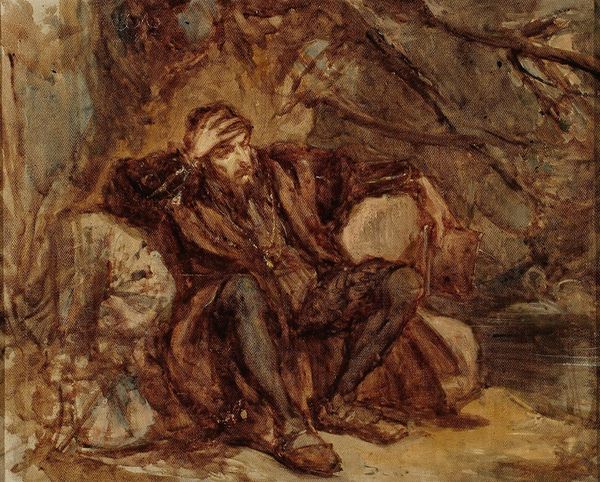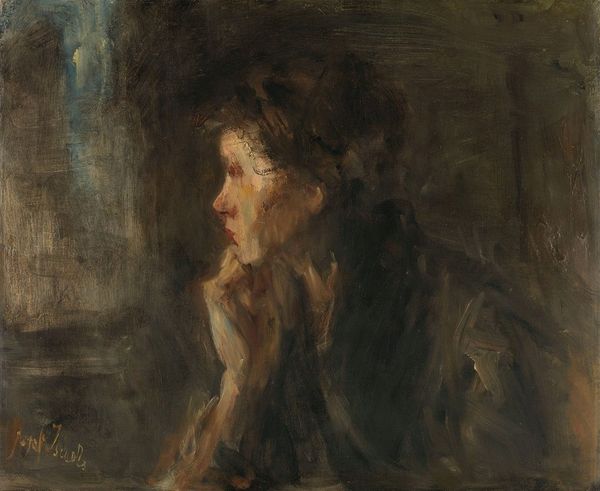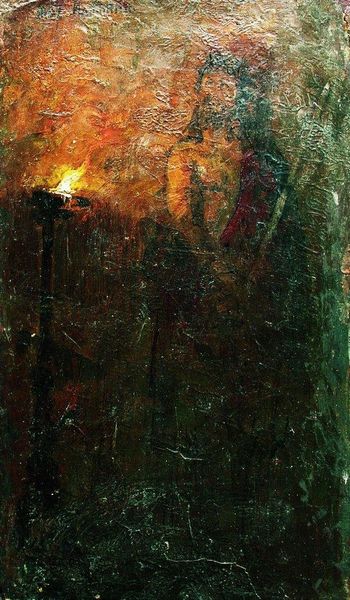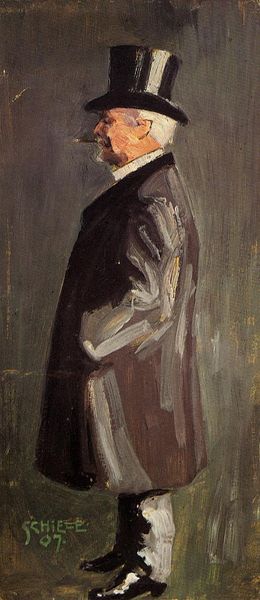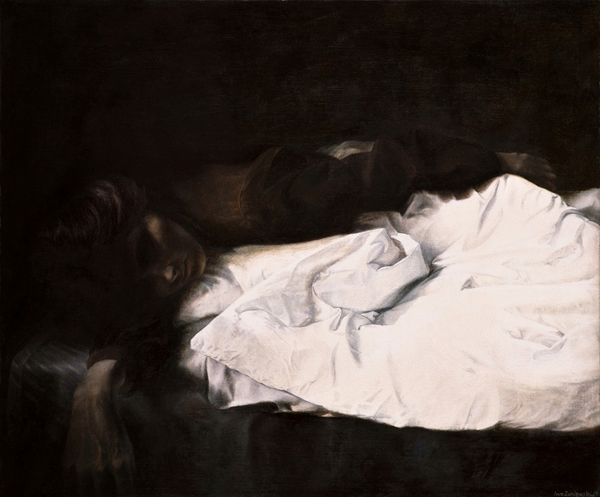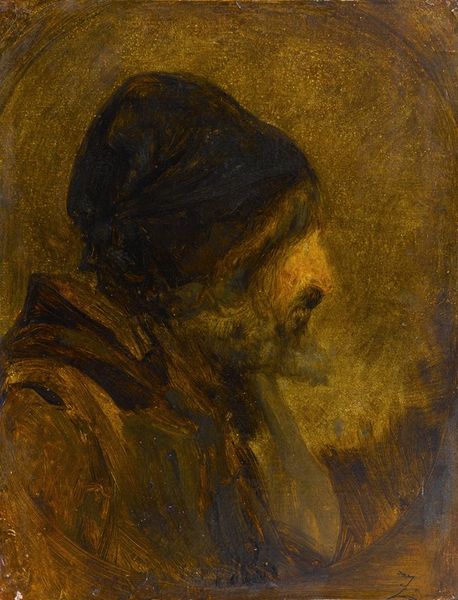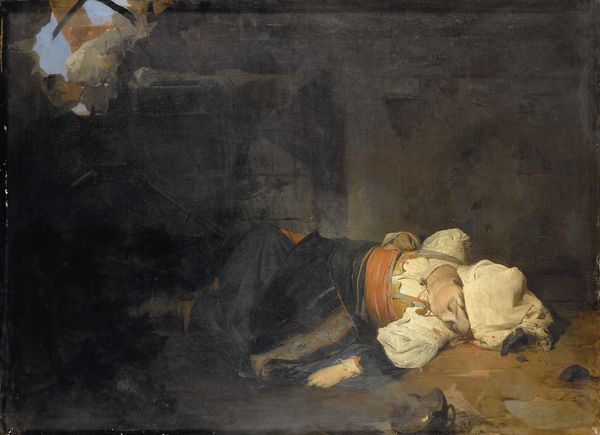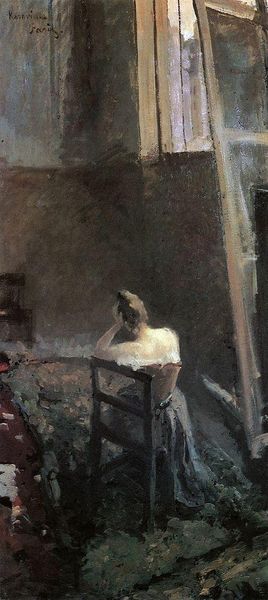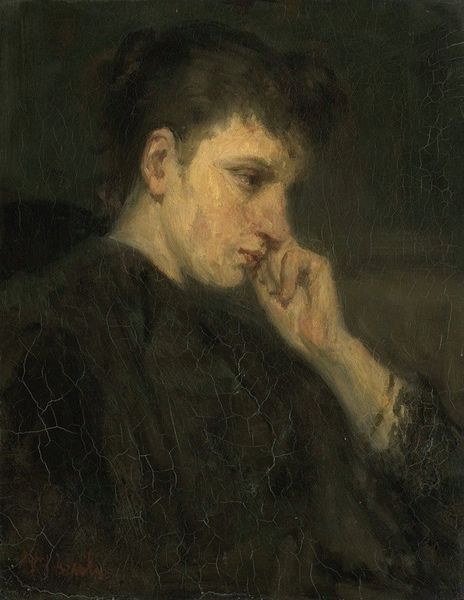
painting, oil-paint
#
portrait
#
gouache
#
painting
#
oil-paint
#
romanticism
#
genre-painting
#
academic-art
#
mixed media
#
realism
Copyright: Public domain
Editor: So, this is “At the Table,” by Marie Bashkirtseff, made with oil paint, sometime in the late 19th century. There's a figure with their head in their hand, it all looks very moody and introspective. How do you interpret this work? Curator: Given the period, and Bashkirtseff's own background, I immediately see this as a comment on the constraints placed on women, particularly those from privileged backgrounds. We see that tension visually, don’t we? The oppressive darkness surrounding the figure? Editor: Oppressive... yes, the lighting certainly creates that atmosphere. It’s like the darkness is almost swallowing her. Curator: Exactly. And consider the public role of women artists at this time. Did the Academy reinforce or challenge those constraints? How did galleries represent female subjects, and how might that differ from a woman artist representing herself, or other women? Editor: I hadn’t really considered it that way. It’s easy to just see it as sadness, but viewed in the context of women’s limited roles, it becomes a statement. Do you think that this painting might have been an effort to claim public space for a woman's experience of confinement? Curator: Precisely! And by displaying such personal and subtle imagery, Bashkirtseff challenges the predominantly heroic and historical narratives usually accepted in academic circles. It invites the public to empathize with everyday female experience. Editor: That gives me a lot to think about, it adds a layer of social critique I hadn’t noticed before. Curator: Art gives visibility to the personal, which helps us reflect critically on society. That's the true political power of the image.
Comments
No comments
Be the first to comment and join the conversation on the ultimate creative platform.
